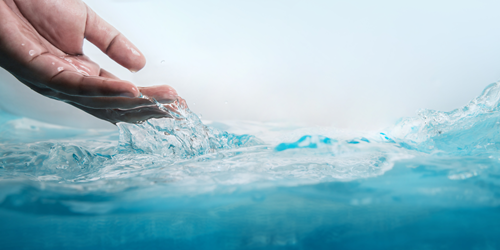Sorting Ions by How Fast They Move
Desalinating water involves separating sodium chloride ions from H2O molecules. Most technologies for this process cannot differentiate between ions with similar charge properties, so along with the sodium chloride, they also remove other minerals—such as calcium and magnesium—that plant operators would prefer to retain. That means the water must be post-treated to add the wanted minerals back in. Furthermore, if the liquid contains toxic materials, such as arsenic or lead, their removal requires a more intensive desalination process, which can extract more sodium chloride than is necessary to achieve levels considered safe for drinking. This overfiltering has a significant energy cost, so researchers are looking for one-step methods that can selectively remove ions from a liquid. Alon Herman of Tel Aviv University, Israel, and his colleagues now propose such a method [1].
The team’s method separates ions by their diffusion coefficients, which typically vary even between ion species with the same charge. The team places the ions in a so-called electric ratchet—a device with an asymmetric, oscillating electric potential. In an electronic ratchet, an ion’s direction of motion depends on the oscillation frequency of the potential. The team’s model predicts that at certain frequencies same-charge ions with different diffusion coefficients can be driven in opposite directions, allowing the ions to be separated. The required diffusion constant difference can be as little as 1%.
As well as water purification, team member Gideon Segev says that the method could be used to harvest lithium from seawater and to mimic biological processes. “Every living cell membrane is a selective ion pump,” he says.
–Katherine Wright
Katherine Wright is the Deputy Editor of Physics Magazine.
References
- A. Herman et al., “Ratchet-based ion pumps for selective ion separations,” PRX Energy 2, 023001 (2023).




